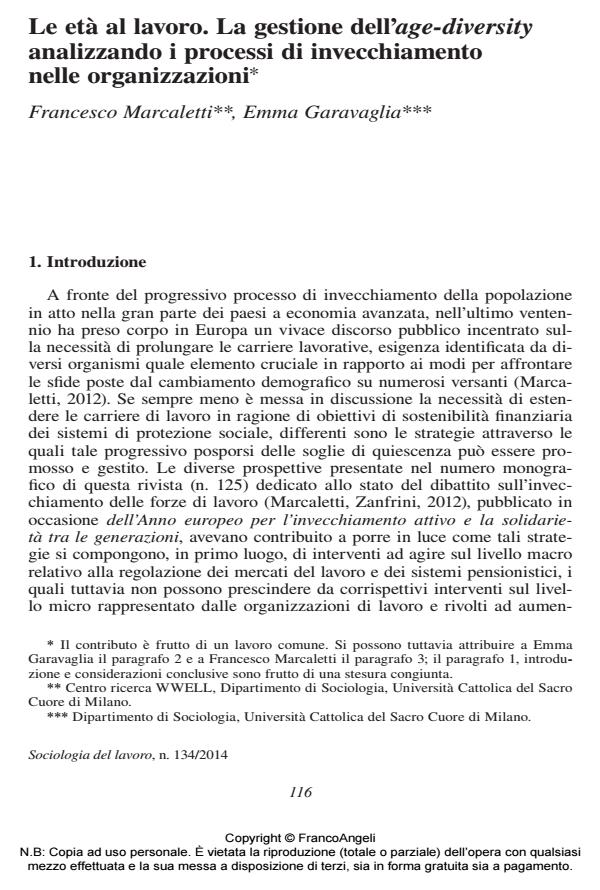Le età al lavoro. La gestione dell’age-diversity analizzando i processi di invecchiamento nelle organizzazioni
Titolo Rivista SOCIOLOGIA DEL LAVORO
Autori/Curatori Francesco Marcaletti, Emma Garavaglia
Anno di pubblicazione 2014 Fascicolo 2014/134
Lingua Italiano Numero pagine 18 P. 116-133 Dimensione file 134 KB
DOI 10.3280/SL2014-134007
Il DOI è il codice a barre della proprietà intellettuale: per saperne di più
clicca qui
Qui sotto puoi vedere in anteprima la prima pagina di questo articolo.
Se questo articolo ti interessa, lo puoi acquistare (e scaricare in formato pdf) seguendo le facili indicazioni per acquistare il download credit. Acquista Download Credits per scaricare questo Articolo in formato PDF

FrancoAngeli è membro della Publishers International Linking Association, Inc (PILA)associazione indipendente e non profit per facilitare (attraverso i servizi tecnologici implementati da CrossRef.org) l’accesso degli studiosi ai contenuti digitali nelle pubblicazioni professionali e scientifiche
Le recenti riforme dei sistemi pensionistici poste in essere nella grande parte dei paesi europei hanno lasciato emergere la necessita - all’interno delle organizzazioni - di politiche di gestione delle risorse umane capaci di far fronte alle sfide di un’eta media dei lavoratori e di un mix generazionale costantemente crescenti. A partire dall’introduzione dei fondamentali teorici in materia di age management, sulla base dell’analisi della letteratura sociologica, organizzativa e manageriale, il contributo illustra l’architettura e i primi risultati dell’applicazione di uno strumento di age management - il questionario Quality of Ageing at Work, Qawq - il cui obiettivo e quello di analizzare la qualita dei processi di invecchiamento al lavoro per sostenere una piu efficace gestione di lavoratori di diverse eta. Sviluppato a partire dagli elementi di base del concetto di workability, il Qaw-q produce risultati a sostegno di responsabili delle risorse umane e datori di lavoro chiamati a guidare processi di HRM, ponendo in evidenza l’influenza che l’eta, nei suoi molteplici significati (eta anagrafica, seniority, anzianita contributiva), puo esercitare sulle percezioni individuali di qualita dell’esperienza di lavoro.
Parole chiave:Age management, workability, eta, invecchiamento, qualita del lavoro, HRM
- Parti sociali e invecchiamento della forza lavoro: strategie d'azione e rappresentanza dei lavoratori over 50 in tre settori Dario Raspanti, in GIORNALE DI DIRITTO DEL LAVORO E DI RELAZIONI INDUSTRIALI 185/2025 pp.121
DOI: 10.3280/GDL2025-185007
Francesco Marcaletti, Emma Garavaglia, Le età al lavoro. La gestione dell’age-diversity analizzando i processi di invecchiamento nelle organizzazioni in "SOCIOLOGIA DEL LAVORO " 134/2014, pp 116-133, DOI: 10.3280/SL2014-134007